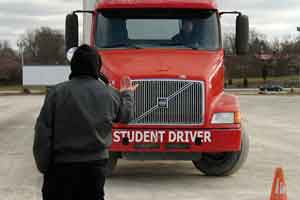Senior Reporter
Commenters Raise Concerns Over Proposed Behind-the-Wheel Hours Requirement

Although the roughly 300 comments filed with the agency earlier in April varied, a majority of trucking stakeholders suggested the proposal could delay quick learners from entering the market as fast as possible.
Many of the comments echoed those made by the West Virginia Trucking Association.
“The arbitrary requirement centered on hours distracts from a greater importance of performance and competency,” the association wrote in April 6 comments. “Many prospective drivers may demonstrate complete proficiency and competence behind the wheel before reaching the minimum hour’s requirement. It is our hope that the final rule will focus on competency and performance outcomes rather than the number of hours logged.”
The proposed rule, published in the Federal Register on March 7, was what the agency called a “negotiated rulemaking” that was largely based on the consensus of a broad-based committee composed of trucker and bus trade groups, driver educators, motor vehicle administrators, training schools and other professionals.
In preparation for its comments, refrigerated carrier C.R. England, based in Salt Lake City, conducted a study using more than 29,000 drivers from its own fleet to compare whether an hours-based program of 30 or more hours produced safer drivers than those drivers who spent less than 30 hours of hands-on driving training.
The drivers with less than 30 hours performed slightly worse in fuel efficiency than those with 30 hours or more, but slightly better in terms of maintenance costs and substantially better in terms of safety costs, England said.
“In other words, drivers from the shorter programs have fewer crashes and less-severe crashes,” England wrote.
However, comments from several nonprofit safety groups supported the concept of requiring a minimum number of hours of behind-the-wheel training.
“Texas requires a journeyman plumber to have 8,000 hours of experience while Oklahoma requires 4,000 verifiable hours of on-the-job experience for a residential electrical journeyman,” said joint comments posted by Advocates for Highway and Auto Safety, Truck Safety Coalition, Commercial Vehicle Safety Alliance and Citizens for Reliable and Safe Highways.
“In addition, barbers licensed in Virginia must accumulate 490 hours of minimum performances and nail technicians must have 275 hours,” the groups said. “These standards represent a common-sense measurement to ensure that a new entrant has the minimum skills needed to operate in their chosen occupation.”
The Commercial Vehicle Training Association said that because the specially appointed stakeholder committee had supported most of the proposal’s requirements, it agreed that the minimum 30-hour behind-the-wheel training “improves safety and is a logical and reasonable interpretation of the enabling statute.”
The Owner-Operator Independent Drivers Association called the proposed rule’s 30-hour provision “an immense improvement over the current standard."
For additional coverage of this topic, read the April 18 edition of Transport Topics.

